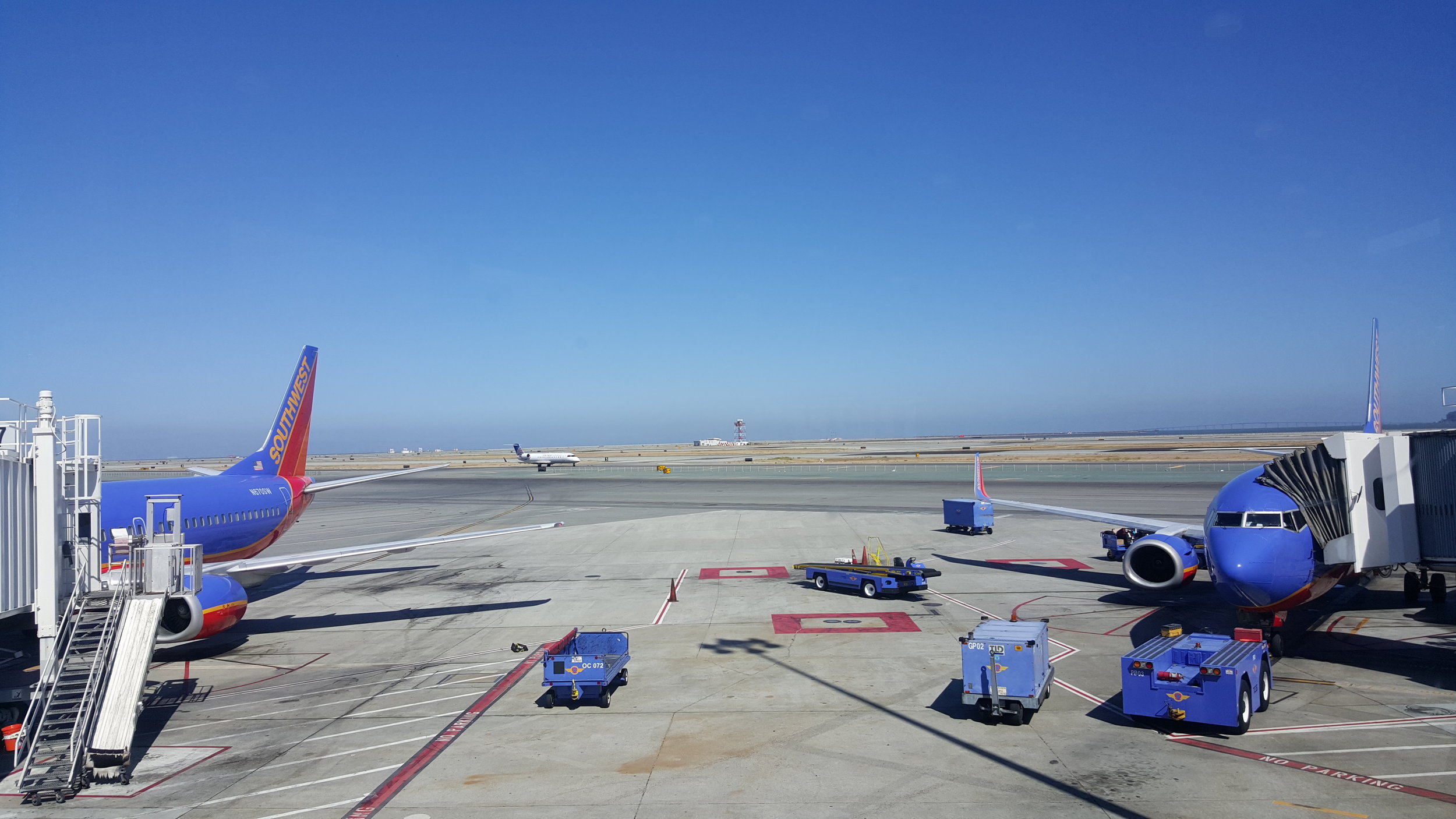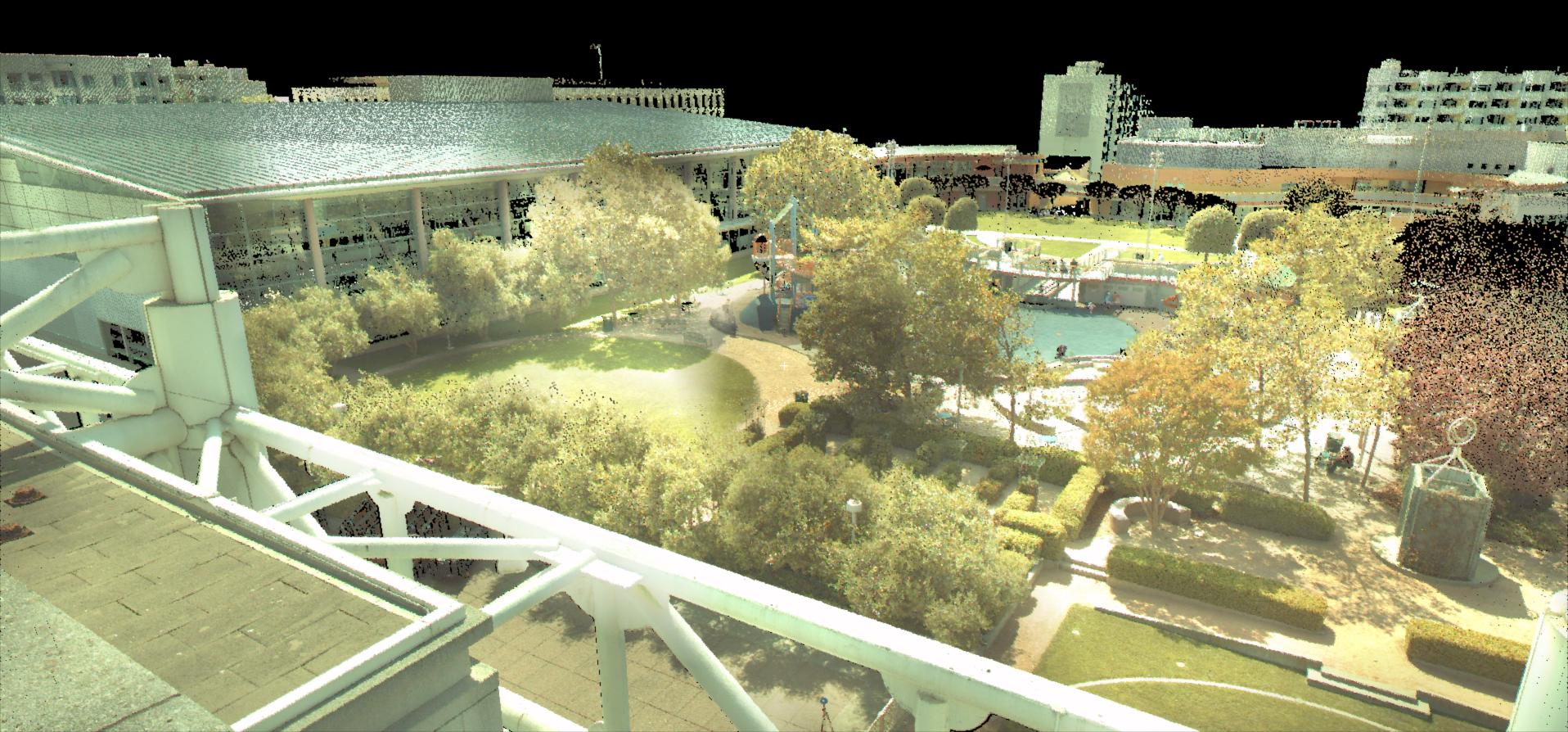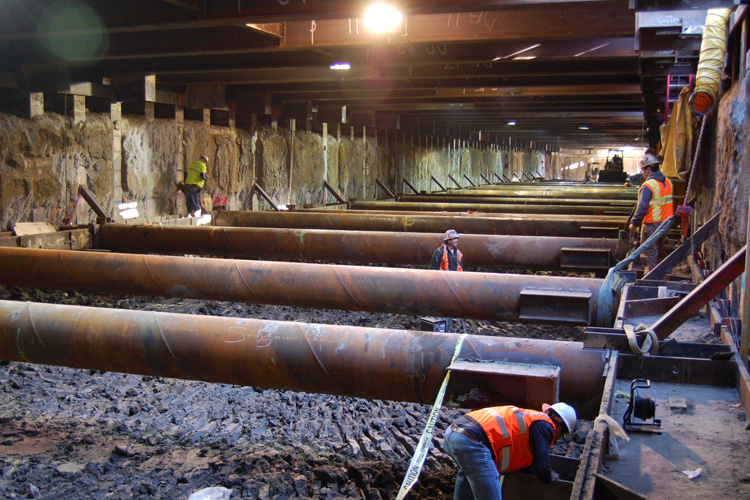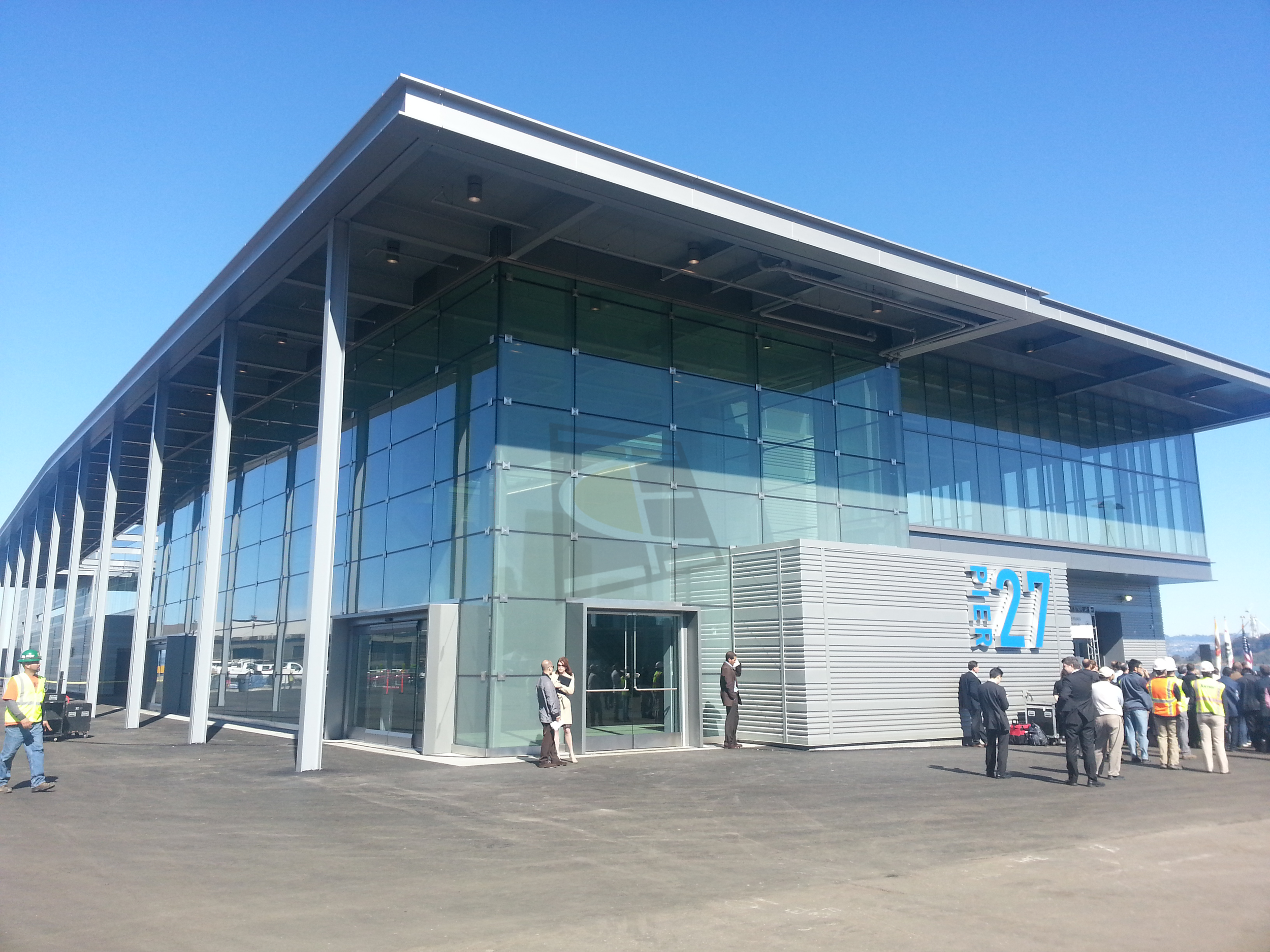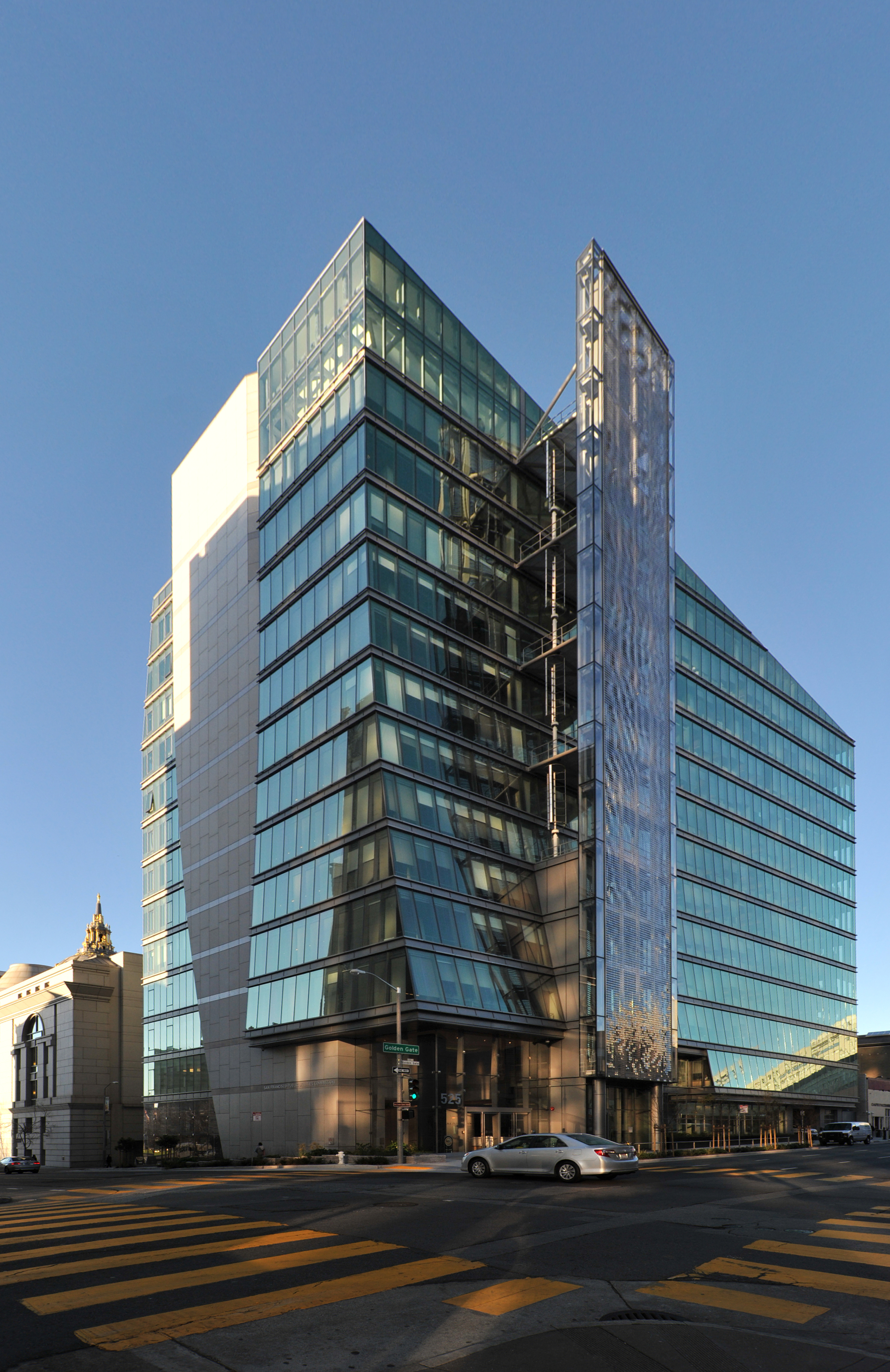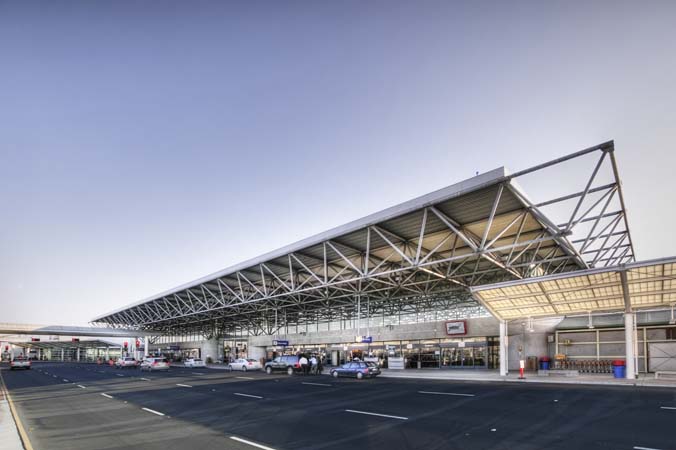Latest News
9/21/2016 - MAJOR IMPROVEMENTS IN SFO UNDERWAY
Telamon Engineering Consultants, Inc is currently providing civil engineering, land surveying, and utility locating services to multiple projects in SFO. It includes the following projects:
- SFO Interim Boarding Area B, a temporary facility to service passenger traffic during phase 1 construction of the permanent SFO Terminal 1 and Boarding Area B
- SFO Long Term Parking Garage 2, a new parking garage structure
- SFO Grand Hyatt Hotel, a new hotel that would be connected to the airport through the AirTrain
- SFO Ground Transportation Unit, includes a radio ship, gas station, and car/bus wash
- SFO Fire House 3 and South Field Checkpoint, a new fire house station along South McDonnell Road and the relocation of South Field Checkpoint
- SFO Consolidated Administrative Campus, includes a new office building, demolition of existing buildings, construction of North Campus Road and East Campus Road
SFO flying high on renovations, regional growth
By Jessica FloumSeptember 19, 2016 Updated: September 19, 2016 11:35am
(Article originally from SF Chronicle -- http://www.sfchronicle.com/business/article/SFO-flying-high-on-regional-growth-9230794.php#photo-10847989)
San Francisco, CA --- A new air-traffic control tower. Major terminal renovations, including a new boarding area and baggage handling system at Terminal 1. A new hotel and long-term parking garage. Security upgrades. Energy-efficiency improvements.
Lifted on the wings of the Bay Area’s economy, San Francisco International Airport is working its way through a huge, $5.7 billion to-do list over the next five years. The goal is to move travelers quickly, enjoyably and safely through the nation’s seventh-largest airport, as befits SFO’s emerging status as the nation’s fastest-growing airport for international travelers. On Thursday, the airport raised $881.7 million to fuel the growth, the largest bond sale in the airport’s history.
“Our international growth continues to be dramatic,” said Ivar Satero, the airport’s new director, who was appointed by San Francisco Mayor Ed Lee and took the helm in July. And the takeoff in domestic and international travel will not end, he said.
United Airlines has added five international routes out of SFO this year, including flights to two major technology hubs, Tel Aviv and Hangzhou, China. Last year, by contrast, the airline added no international flights from SFO.
“We have aircraft technology with the 787, continued strong demand growth between the U.S. and the Asia-Pacific region, and the continued strength of the San Francisco economy,” said Andy Buchanan, managing director of international network planning at United. “This is the year it sort of all came together.”
United is hardly alone: Air Berlin started a direct service to Dusseldorf, Germany, in May, and Fiji Airways started a direct service to the island nation in June. Singapore Airlines recently began flights to SFO, a response to a new United route — and Wow Air added a flight to Reykjavik, Iceland, in June.
Other regional airports are also booming: The number of passengers going through San Jose airport jumped 19 percent between 2010 and 2015. At Oakland International Airport, the number of travelers grew 9 percent last year alone.
Satero sees SFO’s future as so promising that he even welcomes competition from the state’s planned high-speed railroad between San Francisco and Los Angeles. SFO currently offers 150 daily flights to and from the Los Angeles basin, and Gov. Jerry Brown hopes to shift some of them to the low-carbon rail line. Satero is fine with that: “That’s not the best use of our airspace,” he said.
International routes attract more free-spending business travelers, which is good for airlines and airports alike. Shifting from 90-minute shuttle flights to longer routes to Europe and Asia will let SFO make more from the space it has.
SFO can seem enormous. Satero likens it to “a city unto itself.” More than 11.3 million international passengers went through the airport in 2015, up 9 percent from 2014, on top of almost 40 million domestic passengers. It has its own police station, three fire departments, plumbers, electricians, engineers, vendors and shoe shiners.
Satero coordinates weekly security meetings with the Transportation Security Administration, the FBI and local law enforcement. He relays area noise complaints to the Federal Aviation Administration — an increasing issue on the Peninsula, where homeowners in Palo Alto and other cities have complained about new routes that mean flights overhead.
“Until you sit in the chair, I don’t think you have the appreciation of how complicated running an airport is,” said Satero, who has been with the airport 22 years and was previously the chief operating officer. He takes two walks through SFO each day at peak travel times — one in the morning and one in the afternoon — so he can talk to vendors, drive the runways to observe plane traffic, and check drop-off areas for car congestion. The janitor-in-chief also checks the garbage collection area.
Plenty of new features are on tap, funded by SFO’s array of revenue sources: landing fees and terminal rental charges as well as parking and concessions. A new, seismically secure air traffic control tower is set to open in October, paid for in part by an $80 million FAA grant. Steel cables inside the 220-foot tower are designed to stretch so that the tower will remain standing and functional after an 8.0-magnitude earthquake. The old tower will be torn down.
The airport estimates it will spend close to $1.7 billion on Terminal 1 over the next five years, renovating the terminal, including moving Southwest gates from a rotunda that is temporarily housing them to a new boarding area. Improvements, such as a unified security checkpoint, are also afoot in Terminal 3, and baggage handling is set for an overhaul at the International Terminal.
Plenty of new features are on tap, funded by SFO’s array of revenue sources: landing fees and terminal rental charges as well as parking and concessions. A new, seismically secure air traffic control tower is set to open in October, paid for in part by an $80 million FAA grant. Steel cables inside the 220-foot tower are designed to stretch so that the tower will remain standing and functional after an 8.0-magnitude earthquake. The old tower will be torn down.
The airport estimates it will spend close to $1.7 billion on Terminal 1 over the next five years, renovating the terminal, including moving Southwest gates from a rotunda that is temporarily housing them to a new boarding area. Improvements, such as a unified security checkpoint, are also afoot in Terminal 3, and baggage handling is set for an overhaul at the International Terminal.
04/15/2016 - ASCE Region 9 outstanding projects award
The Central Subway project was awarded as the Most Outstanding Transportation Project for 2015 by the American Society of Civil Engineers in Region 9. TECI Principal, Mennor Chan, along with her JV Partners from Parson Brinckerhoff and San Francisco Municipal Transportation Agency representatives, received the award during the Awards Dinner held on 3/18/2016 at the Sheraton Grand Sacramento Hotel.
The James Herman International Terminal (Pier 27) was also recognized as the Most Outstanding Airports/Ports project by the ASCE. Telamon Engineering Consultants, Inc was also the Civil Engineer of Record for this project.
Both Central Subway and Cruise Terminal were awarded as an Outstanding Project by the ASCE San Francisco chapter.

